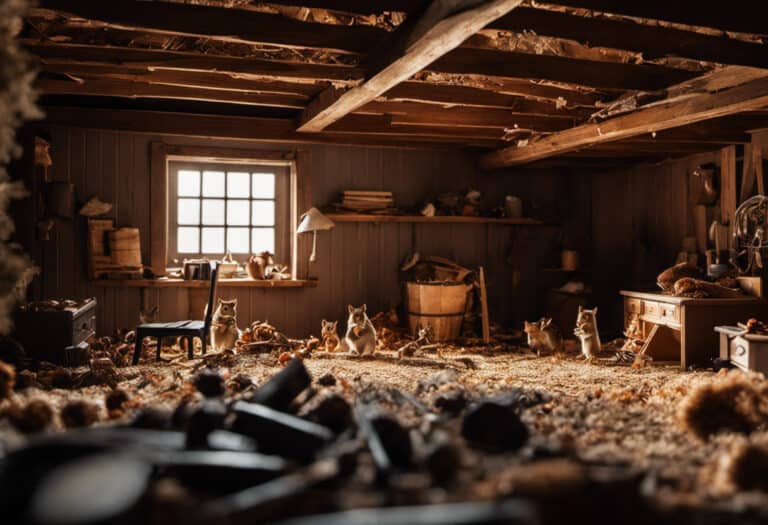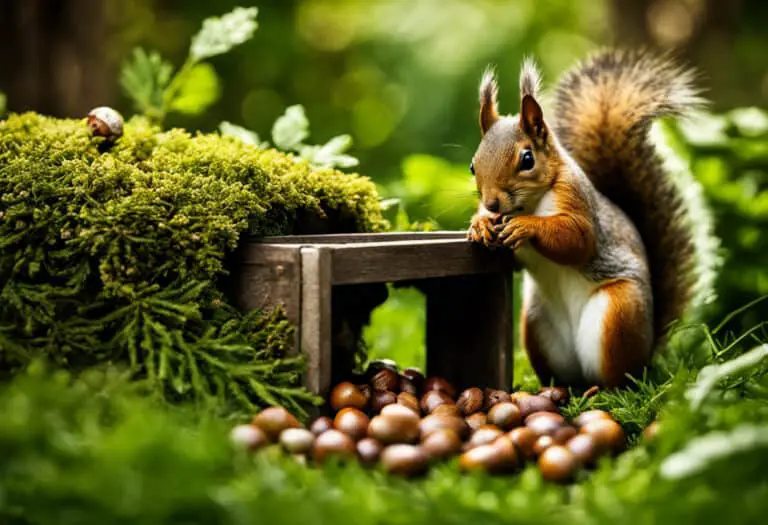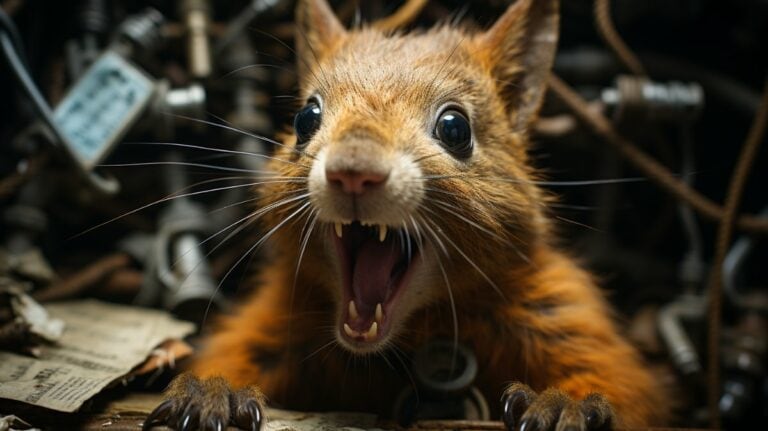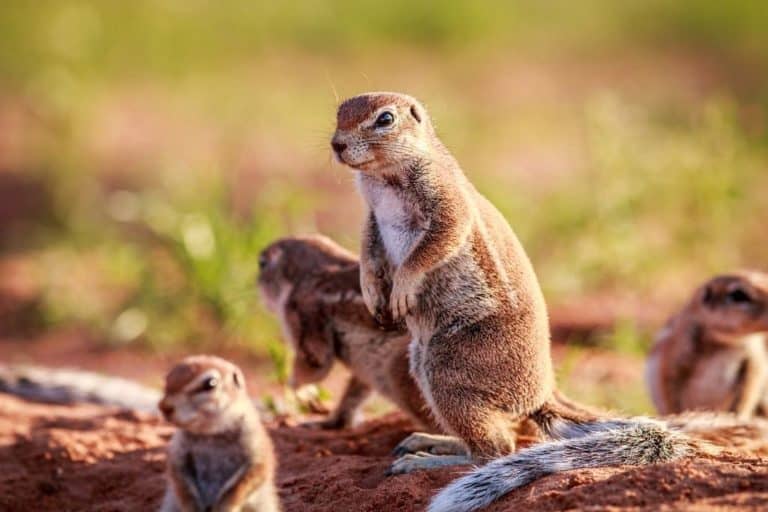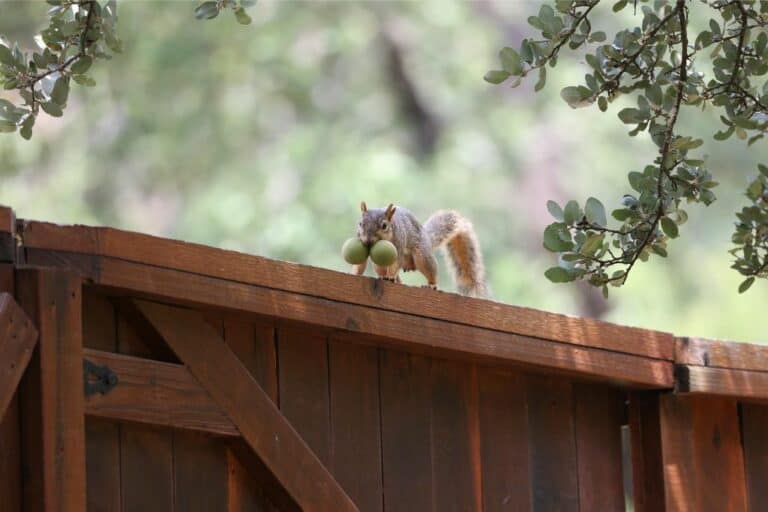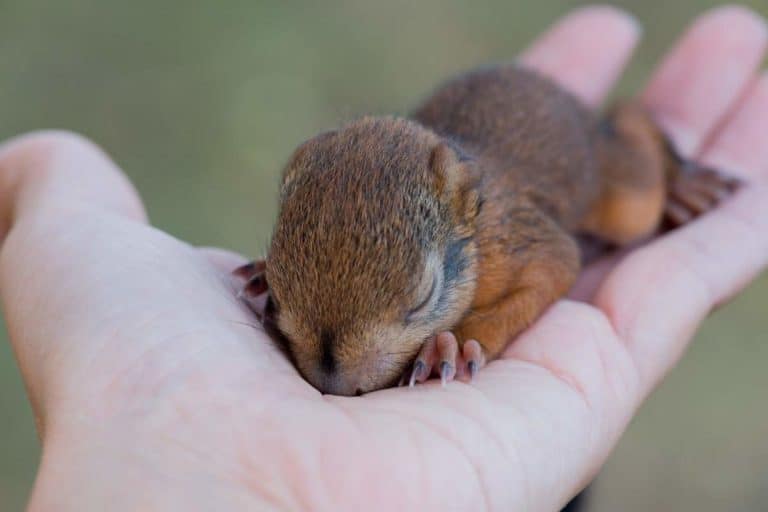What is the natural lifespan of a squirrel?
“Squirrels, with their bushy tails and nimble movements, are small mammals that belong to the family Sciuridae. They are known for their climbing abilities and their foraging behavior. Understanding the lifespan of squirrels requires considering various factors that can influence their longevity. Let’s dive into the details.
What Factors Affect the Lifespan of a Squirrel?
The natural lifespan of a squirrel can be influenced by several factors. These include the species of squirrel, environmental conditions, availability of food and water, and the presence of predators or threats.
What is the Natural Lifespan of a Squirrel?
The lifespan of squirrels can vary depending on the species. Here are the average lifespans for different types of squirrels:
- Lifespan of Tree Squirrels: Tree squirrels, such as the Eastern Gray Squirrel, typically live for about 8 to 12 years in the wild. However, they have been known to survive up to 20 years in captivity.
- Lifespan of Ground Squirrels: Ground squirrels, like the California Ground Squirrel, have a shorter lifespan compared to tree squirrels. They usually live for around 5 to 10 years in the wild.
- Lifespan of Flying Squirrels: Flying squirrels, such as the Northern Flying Squirrel, have a similar lifespan to tree squirrels, ranging from 8 to 12 years in the wild.
Factors that can Increase or Decrease a Squirrel’s Lifespan
Several factors can impact the lifespan of squirrels:
- Availability of Food and Water: A consistent and abundant food source, as well as access to clean water, can contribute to a longer lifespan for squirrels.
- Predators and Threats: Squirrels face various predators, including hawks, snakes, and domestic cats. The presence of predators can decrease their lifespan.
- Environmental Conditions: Harsh weather conditions, such as extreme cold or heat, can impact the survival of squirrels, potentially leading to a shorter lifespan.
What Can Humans Do to Help Increase the Lifespan of Squirrels?
Humans play a significant role in the lives of squirrels. To help increase their lifespan, we can:
- Create a Squirrel-Friendly Environment: Planting trees and providing nesting boxes or shelter can create a suitable habitat for squirrels.
- Avoid Harmful Practices: Using humane methods to deter predators can help protect.
“
Key takeaway:
- The natural lifespan of a squirrel depends on its species: Tree squirrels, ground squirrels, and flying squirrels have different lifespans due to their varying habitats and behaviors.
- Factors influencing a squirrel’s lifespan include the availability of food and water, presence of predators and threats, and environmental conditions.
- Human intervention can play a role in increasing the lifespan of squirrels by ensuring a suitable habitat, providing supplemental food and water, and minimizing threats and disturbances.
What is a Squirrel?

Photo Credits: Wildanimalscentral.Com by Logan Martinez
A squirrel is a small to medium-sized rodent that belongs to the family Sciuridae. They are known for their bushy tails, sharp claws, and ability to climb trees with ease. Squirrels are found in various habitats, including forests, woodlands, parks, and urban areas.
Characteristics of squirrels:
- Physical appearance: Squirrels have a compact body, slender limbs, and a long, fluffy tail. They come in a range of colors, including gray, brown, black, and red, depending on the species.
- Diet: Squirrels are primarily herbivorous, with their diet consisting mainly of nuts, seeds, fruits, and tree bark. Some squirrel species may also consume insects, eggs, and small vertebrates.
- Behavior: Squirrels are known for their agility and quick movements. They are skilled climbers and can leap from tree to tree with ease. They build nests, called dreys, in trees and use them for shelter and raising their young.
- Communication: Squirrels communicate using a variety of vocalizations, such as chirps, squeaks, and alarm calls. They also use their tails as a form of communication, signaling danger or displaying aggression.
- Reproduction: Squirrels typically breed once or twice a year, depending on the species. The gestation period varies but is generally around 30-45 days. Squirrel offspring, known as kits or pups, are born blind and hairless and require parental care until they are able to venture out on their own.
Squirrels play an important role in ecosystems as seed dispersers and are considered a vital part of many forest food chains. Understanding their natural lifespan and behavior can help in appreciating and conserving these fascinating creatures.
What Factors Affect the Lifespan of a Squirrel?

Photo Credits: Wildanimalscentral.Com by Albert Gonzalez
The lifespan of a squirrel can be influenced by various factors, including:
- Species: Different species of squirrels have different lifespans. For instance, the average lifespan of a gray squirrel is about 6 years, while some larger species like the red squirrel can live up to 10 years or more.
- Habitat: The environment in which a squirrel lives can impact its lifespan. Squirrels in urban areas may face more risks and have shorter lifespans compared to those in natural habitats with fewer human disturbances.
- Predators: The presence of predators such as birds of prey, snakes, and mammals can significantly affect a squirrel’s lifespan. Squirrels in areas with high predator populations may have shorter lifespans due to increased predation risks.
- Food Availability: The availability of food sources plays a vital role in a squirrel’s lifespan. Squirrels with access to abundant and nutritious food are more likely to live longer compared to those with limited food resources.
- Health and Genetics: A squirrel’s overall health and genetic factors can influence its lifespan. Squirrels with good genetics and robust immune systems may have a better chance of living longer and resisting diseases.
- Human Interactions: Human interactions can both positively and negatively impact a squirrel’s lifespan. Squirrels that are well-adapted to human presence and have access to supplementary food sources in residential areas may live longer. Conversely, squirrels exposed to hazards like traffic, pollution, or human interference may have shorter lifespans.
- Seasonal Factors: The seasonality of a squirrel’s habitat can affect its lifespan. Harsh winters or periods of food scarcity can increase mortality rates, while milder seasons with abundant food resources can promote survival and longevity.
- Reproduction: Squirrels typically have higher mortality rates during their first year of life due to various factors like predation and inexperience. Those that survive this critical period may have the potential for longer lifespans.
It is important to note that while these factors can influence the lifespan of a squirrel, individual variations and circumstances also play a role in determining how long a squirrel lives in the wild.
What is the Natural Lifespan of a Squirrel?

Photo Credits: Wildanimalscentral.Com by Kevin Ramirez
Curious about the lifespan of squirrels? Let’s dive into the topic and uncover the natural lifespan of these fascinating creatures. From the longevity of tree squirrels to the survival rates of ground squirrels and the remarkable flying squirrels, we’ll explore the various factors that influence their lifespans. Get ready to discover some interesting facts and insights backed by scientific research. So, join me as we unravel the secrets of squirrel lifespans and gain a deeper understanding of these charismatic creatures.
Lifespan of Tree Squirrels
The lifespan of tree squirrels varies depending on several factors.
- The species of squirrel plays a significant role in determining its longevity. For instance, the eastern gray squirrel has an average lifespan of about 12 years, while the red squirrel typically lives for around 5 years.
- Environmental conditions also exert an influence on the lifespan of tree squirrels. Squirrels residing in urban parks or areas with a stable food supply generally enjoy longer lifespans compared to those in regions with limited resources.
- Predators and threats can also impact the lifespan of tree squirrels. Squirrels facing higher levels of predation may experience shorter lifespans as they are more prone to being preyed upon.
- Human intervention and interactions can both positively and negatively influence squirrel lifespans. Squirrels that have access to human-provided food sources and are not exposed to significant human threats can have extended lifespans.
To help increase the lifespan of tree squirrels, it is important to ensure the availability of sustenance such as nuts, fruits, and seeds. Creating habitats that offer shelter and protection from predators can also boost their chances of survival. Minimizing human activities that could harm squirrels, such as using squirrel-proof bird feeders or avoiding unnecessary disturbances to their nests, also helps enhance their lifespan. By respecting and coexisting with these fascinating creatures, we can contribute to the well-being and longevity of tree squirrels.
Lifespan of Ground Squirrels
Ground squirrels have a natural lifespan known as the Lifespan of Ground Squirrels that can vary depending on several factors. The average lifespan of ground squirrels is between 5 to 7 years, but with the right conditions, some ground squirrels can live up to 10 years or more.
One important factor that affects the Lifespan of Ground Squirrels is the availability of food and water. Squirrels require a consistent and adequate food supply to survive. Sustenance availability greatly influences their lifespan, as a lack of food can lead to starvation and shorter lifespans. Another factor that impacts the Lifespan of Ground Squirrels is the level of predation. Ground squirrels are often targeted by predators, such as snakes, foxes, and birds of prey. The higher the level of predation in their environment, the more their lifespan may be affected.
Environmental conditions also play a role in the Lifespan of Ground Squirrels. Ground squirrels live in burrows underground, which provide protection from extreme temperatures and other harsh environmental conditions. Factors like temperature extremes, natural disasters, and habitat destruction can impact their ability to survive and reproduce.
Humans can also influence the Lifespan of Ground Squirrels through human interactions and interventions. For instance, squirrels living in urban parks may have access to human-provided food, which can enhance their survival and potentially extend their lifespan.
The Lifespan of Ground Squirrels can be influenced by factors such as the availability of food and water, level of predation, environmental conditions, and human interventions. By understanding and addressing these factors, we can help increase the Lifespan of Ground Squirrels and ensure their continued survival in their natural habitats.
Lifespan of Flying Squirrels
The lifespan of flying squirrels, like other types of squirrels, can vary depending on several factors. Typically, the natural lifespan of flying squirrels falls between 5 and 10 years. However, some individuals have been known to live up to 15 years when kept in captivity.
The lifespan of flying squirrels can be influenced by various factors. One important factor is the availability of food and water, which is crucial for their survival. During times of scarcity, they may struggle to find enough sustenance, which can lead to a shorter lifespan. Another factor that can impact their lifespan is the level of predation. Flying squirrels are preyed upon by a variety of animals, including hawks, owls, and snakes.
Environmental conditions also play a significant role in determining the longevity of flying squirrels. Harsh weather conditions and the destruction of their habitat can have a negative impact on their survival. Additionally, human interactions can affect flying squirrel populations, especially through the destruction of their habitats.
To help increase the lifespan of flying squirrels, humans can take certain measures. Creating and preserving suitable habitats, such as maintaining mature trees and providing nest boxes, can support their survival. Minimizing the use of pesticides and other harmful chemicals in the environment is also beneficial.
Understanding the factors that influence the lifespan of flying squirrels is crucial. By taking steps to protect their habitats and ensure the availability of food sources, humans can contribute to the well-being and longevity of these fascinating creatures.
Factors that can Increase or Decrease a Squirrel’s Lifespan

Photo Credits: Wildanimalscentral.Com by Edward Green
Did you know that certain factors can greatly impact a squirrel’s lifespan? In this section, we’ll uncover the key elements that can either increase or decrease the duration of a squirrel’s life. From the availability of food and water to the threats posed by predators, as well as the influence of environmental conditions, we’ll explore how these factors play a crucial role in determining the lifespan of our furry friends. Get ready to dive into the fascinating world of a squirrel’s survival!
Availability of Food and Water
The availability of food and water is of utmost importance for the lifespan of squirrels. Squirrels rely on a consistent and ample supply of both food and water to not only survive but also thrive.
When it comes to food, squirrels primarily feed on a variety of nuts, seeds, fruits, and vegetables as their main sources of sustenance, making them primarily herbivores. The survival of squirrels greatly depends on the availability of these food sources. For example, in times of abundance, such as the fall season when nuts are plentiful, squirrels can gather and store food to last them through the scarce winter months.
Availability of water is equally crucial for the survival of squirrels. Squirrels obtain water from natural sources like streams, lakes, and rivers, as well as from the moisture-rich foods they consume. Without access to water, squirrels can become dehydrated, which can lead to severe health problems and even death.
Various factors, including drought, urbanization, and habitat loss, can significantly impact the availability of both food and water for squirrels. These factors contribute to population declines and reduced lifespans. Conservation efforts that prioritize the preservation of natural habitats and ensure reliable water sources can help address these challenges and guarantee the availability of food and water for squirrels.
Predators and Threats
Predators and threats can have a significant impact on the lifespan of squirrels. Here is a list of common predators and threats that squirrels face:
- Predatory birds: Squirrels often fall victim to birds of prey like hawks and owls, utilizing their sharp talons and keen eyesight to capture them.
- Ground predators: Foxes, coyotes, and raccoons are skilled hunters that pose a threat to squirrels on the ground.
- Domestic pets: Cats and dogs can be dangerous for squirrels, especially in residential areas where they can chase and harm them.
- Snakes: Some snakes, such as rat snakes and black racers, feed on squirrels by ambushing them in trees or catching them on the ground.
- Humans: While not natural predators, humans unintentionally harm squirrels through urbanization, habitat destruction, and vehicle collisions, which can cause stress and injuries for squirrels.
Predators and threats have a significant impact on the survival of squirrels in their natural habitats. Avoiding these dangers is crucial for squirrels to have longer lives.
Environmental Conditions
Environmental conditions are of utmost importance when it comes to the lifespan of squirrels. These conditions encompass various factors like the climate, availability of habitats, and resources.
| Climate | Squirrels exhibit a high level of adaptability to diverse climates. Extreme weather conditions, be it severe winters or intense heat, can significantly impact their chances of survival. To counter such conditions, squirrels have developed coping mechanisms, such as constructing nests or hibernating during winters. |
| Habitat availability | An appropriate habitat with an abundance of trees or ground cover is crucial for squirrels. Urban areas furnished with parks and gardens often provide favorable conditions for squirrel populations. However, the loss of habitat due to deforestation or urbanization can have a negative impact on their lifespan. |
| Availability of resources | Squirrels depend on various food sources, including nuts, seeds, fruits, and vegetation. Environmental conditions that affect the availability of these resources can exert a significant influence on their lifespan. Instances of droughts or fluctuations in food availability can result in malnourishment and reduced survival rates. |
Squirrels are remarkably resilient and adaptable creatures, but their lifespan is intricately intertwined with the environmental conditions they reside in. It is imperative to comprehend and preserve these conditions to ensure the long-term survival of squirrel populations.
Did you know? Squirrels have the remarkable habit of burying thousands of nuts throughout their habitats to guarantee a food supply during times of scarcity. This behavior serves as a means of sustenance for them during challenging environmental conditions.
What Can Humans Do to Help Increase the Lifespan of Squirrels?

Photo Credits: Wildanimalscentral.Com by Scott Moore
Humans can take several actions to help increase the lifespan of squirrels:
- Preserve Natural Habitat: Protecting and preserving natural habitats, such as forests and woodlands, provides squirrels with a safe environment to live and thrive. Conserving green spaces and avoiding unnecessary deforestation helps maintain their natural habitats.
- Provide Food and Water: Placing bird feeders or squirrel feeders in gardens or public spaces can help supplement the squirrels’ natural food sources, especially during times of scarcity. Providing a clean and accessible water source, such as a shallow birdbath, can also support their hydration needs.
- Prevent Harmful Substances: Avoid using pesticides, rodenticides, and other harmful chemicals in outdoor spaces frequented by squirrels. These substances can contaminate their food sources and have negative health effects.
- Avoid Feeding Unhealthy Foods: While providing food is beneficial, it is important to avoid feeding squirrels foods that are harmful to their health. This includes processed and sugary foods, as well as foods that are toxic to them, such as chocolate or caffeine.
- Reduce Collisions: Take measures to reduce potential collisions between squirrels and vehicles. This can include observing speed limits in areas with high squirrel populations, especially during active times like dawn and dusk.
- Keep Domestic Pets Under Control: Ensure that domestic pets, particularly cats and dogs, are kept under control when in areas where squirrels are present. Uncontrolled pets can pose a threat to squirrels through predation or stress-induced injuries.
- Support Rehabilitation Efforts: If you come across an injured squirrel, contact local wildlife rehabilitation centers or animal control to ensure proper care and rehabilitation. Do not attempt to handle or care for injured squirrels on your own unless specifically trained to do so.
- Education and Awareness: Increase awareness about the importance of squirrels and their role in ecosystems. Educate others about responsible coexistence with wildlife and the impact of human actions on wildlife populations.
- Responsible Waste Disposal: Properly dispose of waste, including plastics and other potentially harmful materials. Squirrels can come into contact with these items, leading to injuries or ingestion of harmful substances.
- Support Conservation Organizations: Contribute to and support organizations that work towards the conservation and preservation of wildlife habitats. These organizations play a vital role in protecting squirrel populations and their natural habitats.
By implementing these actions, humans can play a part in increasing the lifespan of squirrels and ensuring their well-being in the wild.
Some Facts About the Natural Lifespan of a Squirrel:
- ✅ Squirrels generally have a lifespan of about two to four years in the wild. (Source: Our Team)
- ✅ In captivity, squirrels can live up to 16 years with proper care. (Source: Our Team)
- ✅ Predators such as hawks, foxes, bobcats, and humans are the biggest threat to squirrels’ lifespan in the wild. (Source: Our Team)
- ✅ Disease and harsh weather conditions contribute to the mortality of young squirrels. (Source: Our Team)
- ✅ Factors that affect a squirrel’s lifespan include habitat, species, climate, level of predation, human intervention, and diseases. (Source: Our Team)
Frequently Asked Questions
What is the natural lifespan of a squirrel?
The natural lifespan of a squirrel can vary depending on factors such as species, habitat, and predation levels. In general, squirrels in the wild live for about 2 to 4 years. However, some species, like the Eastern Grey Squirrels, can live up to 3 to 4 years, while others, like the Red Squirrels, typically live only about 1 year.
How do squirrels adapt to urban areas?
Squirrels are resilient rodents and have adapted well to urban areas. Their inquisitive nature and ability to find food in various environments contribute to their resilience. They have learned to navigate through backyard rodents, escape predators such as cats and snakes, and even adapt their diet to include bird eggs, wild fruits, and seed crops available in urban settings.
What factors affect the lifespan of squirrels in the wild?
Several factors can impact the lifespan of squirrels in the wild. Predators such as hawks, foxes, and bobcats pose a significant threat, as does human intervention through activities like car collisions. Disease and harsh weather conditions also contribute to the mortality of young squirrels. Additionally, the climate in which squirrels live can affect their lifespan, with squirrels in colder climates having shorter lifespans due to difficulties in storing fat and increased vulnerability to predators.
How long do squirrels live in captivity?
Squirrels living in captivity generally have longer lifespans compared to those in the wild. With proper care and absence of predators, they can live up to 16 years. The availability of better food and shelter, along with medical care in captivity, contribute to their increased lifespan.
What is the life cycle of a squirrel?
Squirrels have a similar life cycle regardless of species or location. Newborn squirrels are born in litters of up to 10 babies and are hairless and blind. They rely on their mother for food and spend most of their time sleeping. After two months, they can start venturing outside but usually stay close to their family. Winter poses a challenge for squirrels, and mother squirrels ensure the survival of their newborns by keeping them warm with bedding and plant matter in their den. Juvenile squirrels are considered adolescents from 3 months to a year old.
How do squirrels survive in the wild?
Squirrels use their survival skills, agility, and heightened senses to thrive in the wild. They have adapted to find food, especially during colder weather when food sources may be scarce. They store fat and rely on sources such as seeds, nuts, and tender leaf buds. They also have the ability to abandon trees that may be threatened by predators or harsh conditions, seeking safer locations for their nests.
